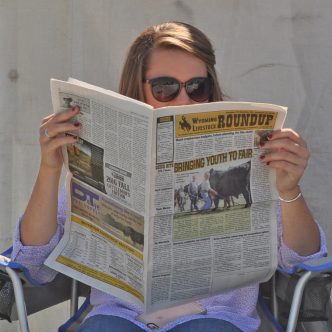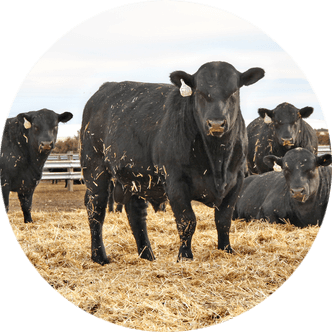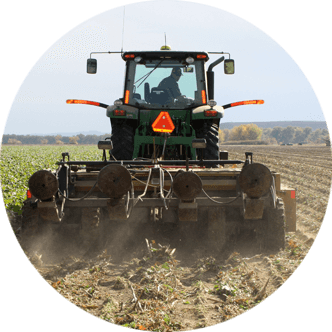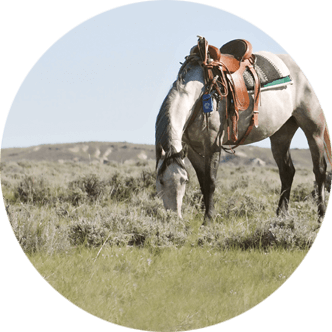Feeding Quality Forum highlights beef’s competitive edge, points to areas for improvement
Cattle keep getting better, but it doesn’t mean producers should slow down progress. This is what attendees took home from the 2025 Feeding Quality Forum, held Aug. 14-15 in Rochester, Minn.
“I would say congratulations to those responsible for the genetic selections behind this improvement,” said Paul Dykstra, Certified Angus Beef (CAB) director of supply management and analysis. “The rest of you added management to it, and together, the choices we’ve all made bring the consumer back to a very elite-priced protein item in the meat case.”
Cattlemen who focus on carcass traits are paid on grid performance, which is one of their biggest opportunities to capture more dollars. Quality tracks seasonal trends – primarily based on the cattle cycle and when calves are born – which leads to periods of high premiums and months with just okay premiums, Dykstra said.
Fed cattle are averaging 70 percent Choice with yield grades two, three and four. The market encourages more days on feed to add weight to these cattle. The result is increased hot carcass weight, backfat and higher yield grades.
While yield and composition have been a priority since before the first National Beef Quality Audit in 1991, greater attention has been given to improving quality grades until now.
CAB President John Stika shared his perspective as a member of the National Cattlemen’s Beef Association (NCBA) Red Meat Yield Working Group, which is evaluating whether the industry is using the right tools to determine cutability and effectively communicate relevant value difference back to producers.
The current yield grade equation hasn’t been updated since it was developed in 1960, and cattle and management practices influencing composition have changed dramatically since then.
“It’s not a matter of choosing quality or yield, it’s a matter of choosing how we’re going to move both of them forward, jointly and together,” Stika said.
No ceiling on quality
Cattle prices have reached a new pricing plateau, according to Dan Basse, AgResource Company president. Each week, cash cattle prices are up, and the packer keeps bidding higher and higher.
Basse estimates beef will bring in $113 billion of revenue this year, while the total corn crop may bring $57 billion.
More good news for cattlemen, he said, is the younger generation likes protein and vegetables.
“If you would’ve told me last year the retail price of beef could be somewhere in the vicinity of $9.50 per pound, and we had no demand rationing, no shifting to chicken or pork, I would have told you you’re crazy,” he said.
Quality and a consistent, repeatable eating experience are behind this, noted David O’Diam. With all beef expensive, the most detrimental thing for consumers would be a bad eating experience.
The increase in Prime carcasses since 2020 has resulted in a more consistent supply of Prime beef in the meat case, thus creating stronger demand for high-quality beef in grocery stores. With 12 percent of the fed cattle grading U.S. Department of Agriculture Prime, there is enough supply to fill consistent orders.
“There’s more demand for this product than what we have,” O’Diam said. “It’s item specific and there are a lot of caveats to it, but the reality is we are demanding more Prime today than ever before and selling it specifically at retail.”
Continuing the progress
Changing cattle takes time. Genetics is part of the equation, but management is just as important.
Dallas Knobloch of 4K Cattle LLC manages a cow/calf herd and buys feeder calves to fill his Minnesota feedyard. As he works with ranchers, he encourages them to work on the 90 percent of things they can control, and the price will follow.
“It’s about getting everything else right first,” Knobloch said. “Whether it’s health, genetics, shipping or trucking, the timing for when we do a lot of these things makes a huge difference at the end of the day on carcass and consistency across a pen.”
“Cattle feeders like predictability. The value of a set of feeder calves varies, and many feeders have been burned before by black-hided cattle with unknown genetic composition,” said Tim Schiefelbein, partner at Schiefelbein Farms and contract manager for American Foods Group.
Cattle feeders want to know what they’re getting and have a marketing plan in mind when they put a group of calves on feed.
“When you know what someone’s supplying you and you get comfortable, that’s when feeding gets fun,” Schiefelbein said. “Nobody wants a surprise.”
Marketing tools like AngusLinkSM verify what’s under the hide and let cattle buyers know exactly what they’re getting.
Genetic differences are easily masked by management and environment, said Brian McCulloh, Woodhill Angus founder.
“Data-driven selection speeds up what nature does slowly,” McCulloh said.
The tools are here, from genomically enhanced expected progeny differences (EPDs) and dollar indexes to genetic testing. Knowing heritability also helps to further a balanced-trait approach, because there may be unintended consequences of thinking narrowly.
“Establish breeding objectives and stay focused on them. Don’t get lost in the mania of choices,” McCulloh encouraged cow/calf producers.
Management includes the resources on a ranch. Identifying outliers in the cow herd, alongside increasing productivity of land, will help keep beef on the plate, noted Jason Rowntree, Michigan State University professor.
“Managed grazing is having cattle at a place for a given period of time to accomplish a purpose with a given behavior,” Rowntree said. “And this purpose can be to improve animal productivity. It can also be to improve landscapes.”
Ducks Unlimited (DU) works with cattlemen to provide conservation dollars to keep grasslands in top shape, not just for wildlife, but for grazing cattle as well.
“You don’t keep the American grasslands for habitat and wildlife unless you keep the cattle and the cowboy on the land as well,” said Ryan Taylor, North Dakota rancher and director of public policy for DU.
“This is more about building a cow sanctuary – then the ducks, pheasants and everything else will show up,” said Troy Hadrick, South Dakota rancher.
In recent years, Hadrick has worked with DU to find ways to increase grass utilization. The better they manage their grass, the more cows they can have on the ranch. Input costs are high, so accessing support for fencing supplies or pipe for new water sources can be the deciding factor on what projects get done.
From the ranch to the feeder, numerous factors affect cattle making it to the packer.
As cattle get bigger and better, different problems are identified. One question the industry faces is if cattle are getting too big for their hearts to handle.
Angus Genetics, Inc. President Kelli Retallick-Riley shared the most recent research on bovine congestive heart failure (BCHF). What was thought to be a problem in steers and heifers on their way to the packer is causing more deaths at 110 days of age, according to the data.
While there may be a genetic component, there are likely also management strategies to minimize BCHF deaths.
“The challenge to all of us is very few issues have been solved with genetics alone,” Retallick-Riley said.
This is promising for an industry of forward-thinking producers with more tools at hand than ever before.
The 2025 Feeding Quality Forum was sponsored by Alltech, AngusLink, NCBA, Cattlemen’s Education Series sponsored by National Corn Growers Association, Diamond V, Drovers, FeedLot, Rabo AgriFinance, Select Sires, Selko and Upper Iowa Beef.
Morgan Boecker is the senior producer communications manager at CAB. This article was originally published by CAB on Sept. 4.





